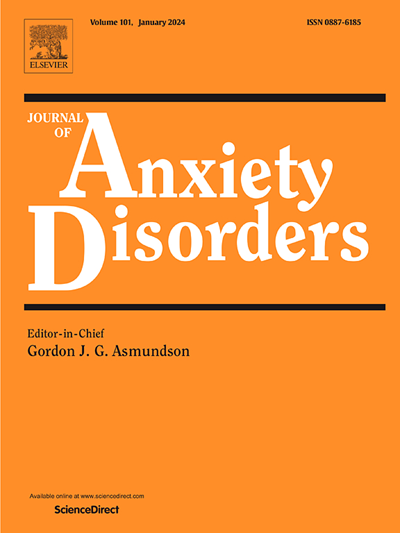Prevalence, correlates, and treatment gap of generalized anxiety disorder among adults in Bangladesh: Results from a nationally representative survey
IF 4.5
2区 医学
Q1 PSYCHIATRY
引用次数: 0
Abstract
This study presents nationally representative findings on the epidemiology of generalized anxiety disorder (GAD) among Bangladeshi adults, based on data from a nationwide household survey. Participants were initially screened using the Self-Reporting Questionnaire (SRQ), and those screening positive underwent face-to-face clinical interviews by trained psychiatrists. Diagnoses were established using DSM-5 criteria. A total of 7270 adults completed all measures used in this survey. The weighted lifetime prevalence of GAD was 3.5 % (95 % CI: 2.9–4.2), with higher rates observed among women (4.2 %) and rural residents (3.7 %) compared to men (2.7 %) and urban residents (2.8 %). Significant correlates included female sex (OR = 1.62, p = 0.012), lower educational attainment (OR = 2.42–3.49, p < 0.05), and a family history of mental illness (OR = 2.56, p = 0.004). Despite the substantial burden, the treatment gap remained alarmingly high, with only 3.9 % of individuals with GAD seeking professional help. Individuals with a family history of mental illness were significantly more likely to seek treatment (OR = 8.32, p < 0.001) for GAD, while no significant associations were found with other sociodemographic factors. These findings highlight the need for community-based awareness programs, the integration of mental health services into primary care, a focus on high-risk groups, and the strengthening of the mental health workforce to address the substantial burden of GAD and reduce the pervasive treatment gap in Bangladesh.
孟加拉国成年人广泛性焦虑障碍的患病率、相关因素和治疗差距:来自全国代表性调查的结果
本研究基于一项全国家庭调查的数据,提出了孟加拉国成年人中广泛性焦虑症(GAD)流行病学的全国代表性研究结果。参与者最初使用自我报告问卷(SRQ)进行筛选,筛选阳性的参与者由训练有素的精神科医生进行面对面的临床访谈。诊断采用DSM-5标准。共有7270名成年人完成了本次调查中使用的所有措施。加权终生GAD患病率为3.5 %(95 % CI: 2.9-4.2),与男性(2.7 %)和城市居民(2.8 %)相比,女性(4.2 %)和农村居民(3.7 %)的患病率更高。显著相关因素包括女性(OR = 1.62, p = 0.012)、较低的受教育程度(OR = 2.42-3.49, p
本文章由计算机程序翻译,如有差异,请以英文原文为准。
求助全文
约1分钟内获得全文
求助全文
来源期刊

Journal of Anxiety Disorders
Multiple-
CiteScore
16.60
自引率
2.90%
发文量
95
期刊介绍:
The Journal of Anxiety Disorders is an interdisciplinary journal that publishes research papers on all aspects of anxiety disorders for individuals of all age groups, including children, adolescents, adults, and the elderly. Manuscripts that focus on disorders previously classified as anxiety disorders such as obsessive-compulsive disorder and posttraumatic stress disorder, as well as the new category of illness anxiety disorder, are also within the scope of the journal. The research areas of focus include traditional, behavioral, cognitive, and biological assessment; diagnosis and classification; psychosocial and psychopharmacological treatment; genetics; epidemiology; and prevention. The journal welcomes theoretical and review articles that significantly contribute to current knowledge in the field. It is abstracted and indexed in various databases such as Elsevier, BIOBASE, PubMed/Medline, PsycINFO, BIOSIS Citation Index, BRS Data, Current Contents - Social & Behavioral Sciences, Pascal Francis, Scopus, and Google Scholar.
 求助内容:
求助内容: 应助结果提醒方式:
应助结果提醒方式:


